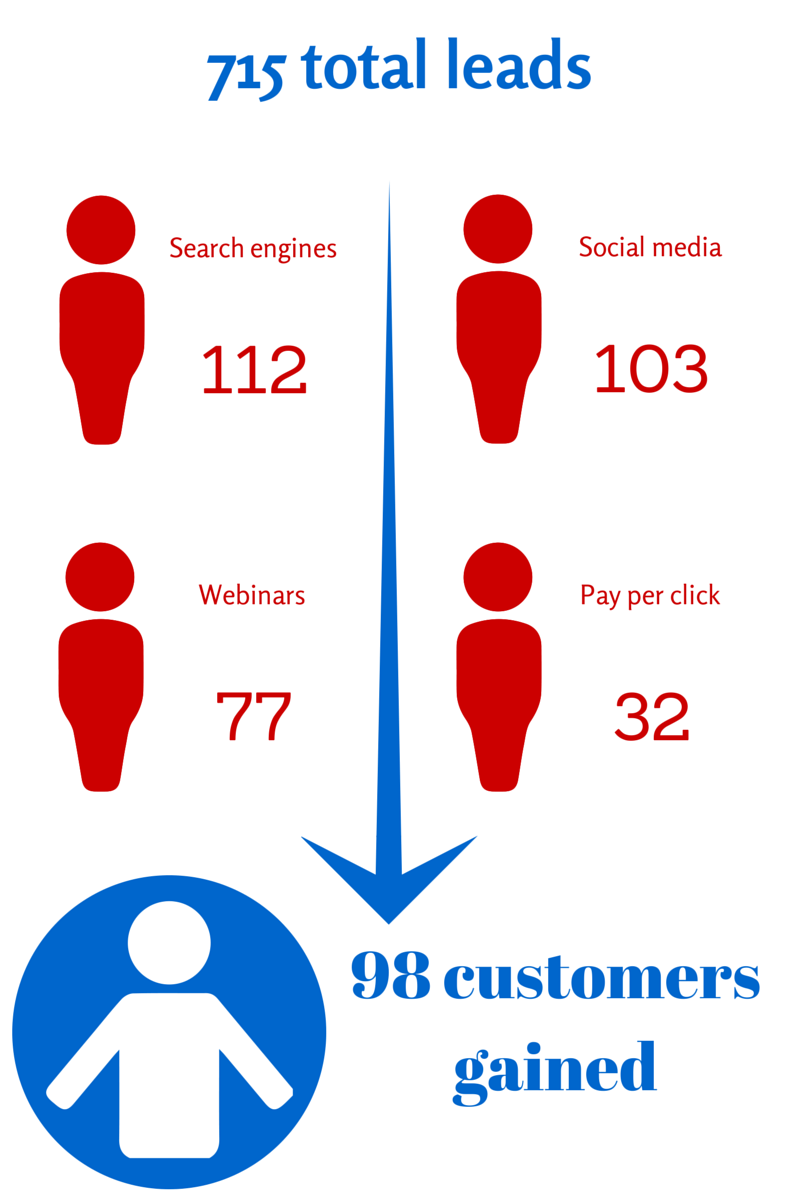
by Fronetics | Nov 18, 2014 | Blog, Logistics, Marketing
 Cerasis is a top North American third party logistics company offering logistics solutions with a strong focus on LTL freight management. In 2012 the company decided to move from a traditional approach to marketing (ads in print publications and a heavy reliance on referrals) to a digital strategy – inbound marketing.
Cerasis is a top North American third party logistics company offering logistics solutions with a strong focus on LTL freight management. In 2012 the company decided to move from a traditional approach to marketing (ads in print publications and a heavy reliance on referrals) to a digital strategy – inbound marketing.
Within 25 months:
- Visits to the Cerasis website increased by 1,141%;
- Visits to the company blog increased from zero to 46,404;
- Traffic driven by social media increased by 376,150%;
- Organic traffic increased by 4,066%.
Moreover, Cerasis gained 715 leads. Fourteen percent of these leads converted to customers. The 98 new customers Cerasis gained through their inbound marketing efforts generated a 14% increase in revenue.
To learn more about Cerasis’ approach to inbound marketing and for more results, download the case study: 3PL company Cerasis acquires 98 customers through inbound marketing.

by Fronetics | Nov 18, 2014 | Blog, Logistics, Marketing
 Cerasis is a top North American third party logistics company offering logistics solutions with a strong focus on LTL freight management. In 2012 the company decided to move from a traditional approach to marketing (ads in print publications and a heavy reliance on referrals) to a digital strategy – inbound marketing.
Cerasis is a top North American third party logistics company offering logistics solutions with a strong focus on LTL freight management. In 2012 the company decided to move from a traditional approach to marketing (ads in print publications and a heavy reliance on referrals) to a digital strategy – inbound marketing.
Within 25 months:
- Visits to the Cerasis website increased by 1,141%;
- Visits to the company blog increased from zero to 46,404;
- Traffic driven by social media increased by 376,150%;
- Organic traffic increased by 4,066%.
Moreover, Cerasis gained 715 leads. Fourteen percent of these leads converted to customers. The 98 new customers Cerasis gained through their inbound marketing efforts generated a 14% increase in revenue.
To learn more about Cerasis’ approach to inbound marketing and for more results, download the case study: 3PL company Cerasis acquires 98 customers through inbound marketing.

by Fronetics | Nov 11, 2014 | Blog, Current Events, Marketing, Social Media, Strategy

Ello launched in beta on August 7th. By the last week in September the invite-only social network was receiving more than 50,000 invite requests per hour.
What sets Ello apart from other social networks? Ello is ad-free and doesn’t sell user data to third parties. On October 23rd Ello became a Public Benefit Corporation; therefore, making it virtually impossible for Ello to ever sell ads or user data.
The company’s manifesto points to the frustrations which were the impetus for founding Ello, and to the company’s strategic direction:
“Your social network is owned by advertisers.
Every post you share, every friend you make, and every link you follow is tracked, recorded, and converted into data. Advertisers buy your data so they can show you more ads. You are the product that’s bought and sold.
We believe there is a better way. We believe in audacity. We believe in beauty, simplicity, and transparency. We believe that the people who make things and the people who use them should be in partnership.
We believe a social network can be a tool for empowerment. Not a tool to deceive, coerce, and manipulate — but a place to connect, create, and celebrate life.
You are not a product.”
Ello’s mindset resonates. Not only are people clamoring to join the social network, investors are pounding on the door. CEO and Co-Founder Paul Budnitz told BusinessWeek:“I have every investor in the world in my inbox. Someone today offered to fly us out in a private jet to talk, and we said we’re just too busy.” Ello is only open to additional financing from backers with similar values.
What can businesses learn from Ello’s rapid rise to stardom? No one wants to be thought of as a product. If your company recognizes this and your social media strategy reflects this – you are more likely to be successful and rise to stardom (or at the very least increase your revenue).
Your company should use social media to:
- Build trust and relationships with prospects and customers;
- Engage with customers;
- Listen;
- Learn from your customers.
As Alexandra Samuel, Vice-President of Social Media at Vision Critical, recently wrote in an article for the HBR Blog Network: “Instead of relying on algorithms and ad targeting to get dollars out of their customers’ wallets, companies need to think about the value they can offer to their customers’ online lives.”

by Fronetics | Nov 11, 2014 | Blog, Current Events, Marketing, Social Media, Strategy

Ello launched in beta on August 7th. By the last week in September the invite-only social network was receiving more than 50,000 invite requests per hour.
What sets Ello apart from other social networks? Ello is ad-free and doesn’t sell user data to third parties. On October 23rd Ello became a Public Benefit Corporation; therefore, making it virtually impossible for Ello to ever sell ads or user data.
The company’s manifesto points to the frustrations which were the impetus for founding Ello, and to the company’s strategic direction:
“Your social network is owned by advertisers.
Every post you share, every friend you make, and every link you follow is tracked, recorded, and converted into data. Advertisers buy your data so they can show you more ads. You are the product that’s bought and sold.
We believe there is a better way. We believe in audacity. We believe in beauty, simplicity, and transparency. We believe that the people who make things and the people who use them should be in partnership.
We believe a social network can be a tool for empowerment. Not a tool to deceive, coerce, and manipulate — but a place to connect, create, and celebrate life.
You are not a product.”
Ello’s mindset resonates. Not only are people clamoring to join the social network, investors are pounding on the door. CEO and Co-Founder Paul Budnitz told BusinessWeek:“I have every investor in the world in my inbox. Someone today offered to fly us out in a private jet to talk, and we said we’re just too busy.” Ello is only open to additional financing from backers with similar values.
What can businesses learn from Ello’s rapid rise to stardom? No one wants to be thought of as a product. If your company recognizes this and your social media strategy reflects this – you are more likely to be successful and rise to stardom (or at the very least increase your revenue).
Your company should use social media to:
- Build trust and relationships with prospects and customers;
- Engage with customers;
- Listen;
- Learn from your customers.
As Alexandra Samuel, Vice-President of Social Media at Vision Critical, recently wrote in an article for the HBR Blog Network: “Instead of relying on algorithms and ad targeting to get dollars out of their customers’ wallets, companies need to think about the value they can offer to their customers’ online lives.”

by Fronetics | Oct 30, 2014 | Blog, Marketing, Social Media, Strategy, Supply Chain

The use of third-party logistics providers are on the rise. As many as nine out of ten 3PLs surveyed by Inbound Logistics reported their client base grew by 5 percent this year, continuing the unabated expansion of recent years.
And there’s good reason for it.
In an interesting article on SupplyChain 24/7, Adam Robinson, the marketing guru at Cerasis, lists seven reasons companies should outsource non-core transportation management functions to 3PL providers. Surprisingly, perhaps, many of the same arguments can be applied to companies debating who should be in charge of their content creation.
As the number one reason to outsource, Robinson cites “Time and Money.”
He writes:
“3PL providers are able to reduce the amount of infrastructure investments in equipment, software, facilities and personnel… These 3PLs are like having non-paid employees on your staff and allow shippers to focus resources on areas where they are the expert (i.e. manufacturing, product sales).”
Time and money – or lack thereof – are similarly common issues among companies with respect to social media. In a new Fronetics report on social media use in the supply chain and logistics industries, nearly half of the respondents cited time and budgetary constraints as their top two challenges. Such companies may, as a result, participate only sporadically or not at all.
Since consistency is crucial to online lead generation, anything but a fulltime commitment to the company blog, content curation, and social media outreach is doomed to fail. An outside provider can, just like a 3PL, take these tasks off your hands, allowing you to focus on your core competencies.
Robinson also argues:
“As shippers rely on 3PL partners to provide more strategic oversight, and help catalyze business process change within the organization, the relationship is growing more fluid, and less analytical. Service providers are becoming an extension of the enterprise.”
In short, 3PL providers should not be perceived as outsiders but as partners who know their stuff. They contract with thousands of carriers and know the fastest and most reliable routes to move product from point A to point B.
A marketing company, especially one specialized in content creation for the logistics, transportation and supply chain industries, works the same way, drawing on a wealth of industry knowledge. In essence, you hire experts equipped with the right strategic tools to leverage their market expertise to your advantage.
Finally, Robinson writes visibility of loads gives 3PLs a leg up on the competition:
“Many 3PLs are able to integrate tracking into shipper IT systems, provide integration into ERP and WMS automated notices or even real-time delivery notifications by e-mail.”
Losing track of a shipment equals chaos. 3PL providers are there to ensure it never happens. In the same vein, companies need to track the metrics of their content strategy or risk wasting resources on something that yields no results. They need to know which social media outlets work for their business and what types of content draw traffic to their site. It takes time and resources – and as our survey revealed, both tend to be in short supply.
Your content marketing partner, on the other hand, knows metrics is as important as a shipment is to a 3PL provider.
Outsourcing content creation may be your strategic advantage over your competition.

 Cerasis is a top North American third party logistics company offering logistics solutions with a strong focus on LTL freight management. In 2012 the company decided to move from a traditional approach to marketing (ads in print publications and a heavy reliance on referrals) to a digital strategy – inbound marketing.
Cerasis is a top North American third party logistics company offering logistics solutions with a strong focus on LTL freight management. In 2012 the company decided to move from a traditional approach to marketing (ads in print publications and a heavy reliance on referrals) to a digital strategy – inbound marketing.

